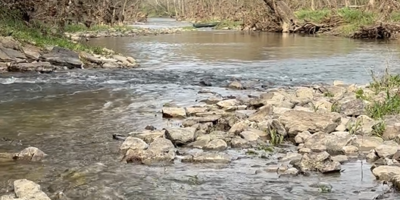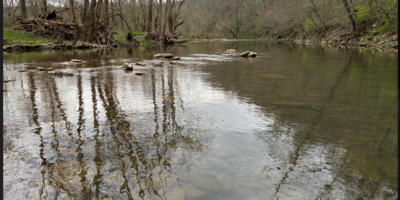Pedestrian take on Lexington development
By Danny Mayer and Beth Connors-Manke
As Lexingtonians continue to adjust to the reality of dwindling city finances, last week elected leaders began soliciting bids for outside consultants to develop plans for two-waying a number of Lexington streets. These include the north-south running Limestone and Upper Streets, and the one-way downtown cross streets Short, Second, Main, Vine, High and Maxwell.
Public support for two-waying derives from numerous studies that claim one-way streets inhibit vibrant urban activity. The reports generally cite two, seemingly contradictory, environmental effects that one-way streets have on traffic. First, car-goers find them inherently confusing and difficult to navigate. Suburban shoppers frustrated at navigating downtown’s one-way thoroughfares rationally choose the easier option of patronizing outlying malls. Second, one-ways compel traffic to move faster. Thus, those who do pass through town naturally travel too fast to stop at urban retail shops and restaurants.
In addition to inflicting damage upon the city’s downtown commercial developments, one-way streets also receive blame for the destruction of the urban fabric itself. Loud, addled, fast-moving traffic on one-way streets, the reports claim, are dangerous and uninviting. Because nobody wants to walk them, they create lifeless and empty pedestrian boulevards.
Looking at these reports, it’s not surprising that city leaders have decreed, as the Lexington Herald-Leader recently did, that “one way streets devalue all the recent private and public investment in downtown.” Not only do they impede customers who might travel into the city from somewhere else (both global creatives and suburban yuppies), one-ways also constrict the freedom of those who live in—and desire to tromp across—the city.
Street cred
We are regular walking citizens of this city of horses, logging on average 25 and 30 urban pedestrian miles about town each week. As a couple of urbanites peering out at suburban two-way roads from our unwanted one-way neighborhood streets, we feel compelled to point out what we consider to be several flaws in the reports circulated by city leaders.
It is clear to us that whoever wrote these reports were not city walkers. The reports claim that one-way streets create dangerous situations for urban walkers, and conversely, that two-way streets provide bi-pedalists a relative measure of safety. Our experiences as walkers suggest the opposite.
If you have ever regularly walked in areas with one-way streets, you have learned that stoplights are safer for walkers because cars have fewer options for turning. With traffic moving in two defined directions, you have fewer chances of being hit—not withstanding the now-and-again bicyclist refusing to follow traffic laws. This is, in fact, one of the best arguments for one-way streets: they are generally safer for peds.
Case in point: Beth’s pedestrian commutes from Chevy Chase and Castlewood, both densely developed areas.
When she followed two-way Fontaine as it becomes two-way Euclid and finally two-way Avenue of Champions (all in little over a mile) to UK, she had to dodge manic traffic. The stoplight at Fontaine and High is a death-defying traverse for any traveler regardless of mode of transport, but it is particularly precarious for the urban pedestrian having to navigate the chaotic confluence of four separate two-lane streets. Things don’t get much more pedestrian friendly on Euclid and Avenue of Champions. At the Euclid Kroger, auto danger comes from the two-lanes of traffic moving in opposite directions, the middle “turn lane” (also bi-directional), and the two-way neighborhood streets intersecting Euclid. The two-way flood of automobiles and bicyclists, whose demographic becomes increasingly erratic as you get to campus with its many unschooled student cyclists, significantly decreased her ability (and desire) to cross Euclid as a pedestrian.
In comparison, her current two-mile trudge down one-way North Limestone to UK does less to addle her already overtaxed brain. At each stoplight, traffic is predictable and visible. It always moves north. No one zooms in or out of a grocery store or gas station, but that is not to say that Limestone isn’t busy, especially as it reaches downtown. Here at high-traffic crossings with Short, Main, Vine and High, the intersection of one-way streets makes for easy crossing routes. The streets are busy, but they are also orderly, which is to say that they are safe for pedestrians. This is perhaps the reason why Lexington’s one-way downtown streets tend to have greater pedestrian density than any other place in the city: they are more open and inviting to we walkers.
Street sense
Almost immediately upon moving onto the 400 block of North Martin Luther King Boulevard, Danny began using North Limestone for his daily trek to Bluegrass Community and Technical College, located at the back of UK’s south campus. Since North MLK dead-ends into the center of UK campus nearby the Student Center, Danny’s choice to hike Limestone was, literally, a decision to make a daily 2-block detour on an already 2-mile walk.
Part of this is personality. Danny can’t do anything straight. But one-way Limestone also provided a strong commercial pull. Walking to school in the morning, he could stop at Third Street to purchase a newspaper and say a quick hello to Hendrick. He could eat breakfast at Giacamo’s, order an Old World “Make Me” at Sunrise for an office lunch, say hi to Eric at the library, or deposit a check at Bank of the Bluegrass. On his way back, if interested he could check in on CD Central, buy books or pipes at Sqecial, grab a beer at Sidebar. Since none of these were located on MLK, his natural north/south two-way artery into campus, one might say that he gravitated to North Limestone even though it was out of his way.
When he began North of Center over two years ago, he grew readership by placing papers along the same one-way thoroughfares: Limestone, Short and Main Streets. Part of this was pedestrian-based—as a walker, he knew which streets people frequented—but part of the reason was commercial. These streets were where businesses were located.
His chief downside in operating the paper continues to be his trip to Danville to pick up the papers. It’s a straight shot down Limestone, turning into two-way Nicholasville Road nearby the UK coal plant, and then more prominently into Highway 27 as it crosses the Kentucky River at Camp Nelson. The only two parts of Nicholasville Road that aren’t a bitch for him to drive are the one way portion that goes through UK and downtown, and the highway-like empty corridor crossing Camp Nelson. The worst part, the nightmare that is two-way Nicholasville Road at the mall, represent all the reasons that suburban development and multi-lane two streets ruin a city.
Creative contemplation and participation, not consumption
Three summers ago, Beth began a regular Saturday morning stroll to Third and Elm Tree when the London Ferrell community garden opened. On the way to work, she now regularly assesses the progress of public art and gardens on North Limestone between Fifth and Seventh, picks up trash, tree-gazes, and hatches plans for litter clean-up and urban re-forestation. Danny is an avid visitor of city parks, a past-time he picked up while walking to Coolavin Park to cover Lexington bike polo. He now takes weekly constitutional morning walks with his friend Martin Mudd.
We see moms walking their children to school and meet strangers who care to strike up a conversation. Walking around the city has made both of us more invested in the public art, urban agriculture, parks, and city development taking shape around us. Our type of observational meandering is the direct product of safe walking conditions, i.e. we have stretches of sidewalk without the threat of a turning car.
As thinking, observing walkers, what we see is a community in bad need of city investment, a city that should be less invested in turning walkable one-way streets into car-friendly, commercial two-ways, and more invested in transforming affordable housing, creating access to locally produced food, and developing better park systems.




Leave a Reply